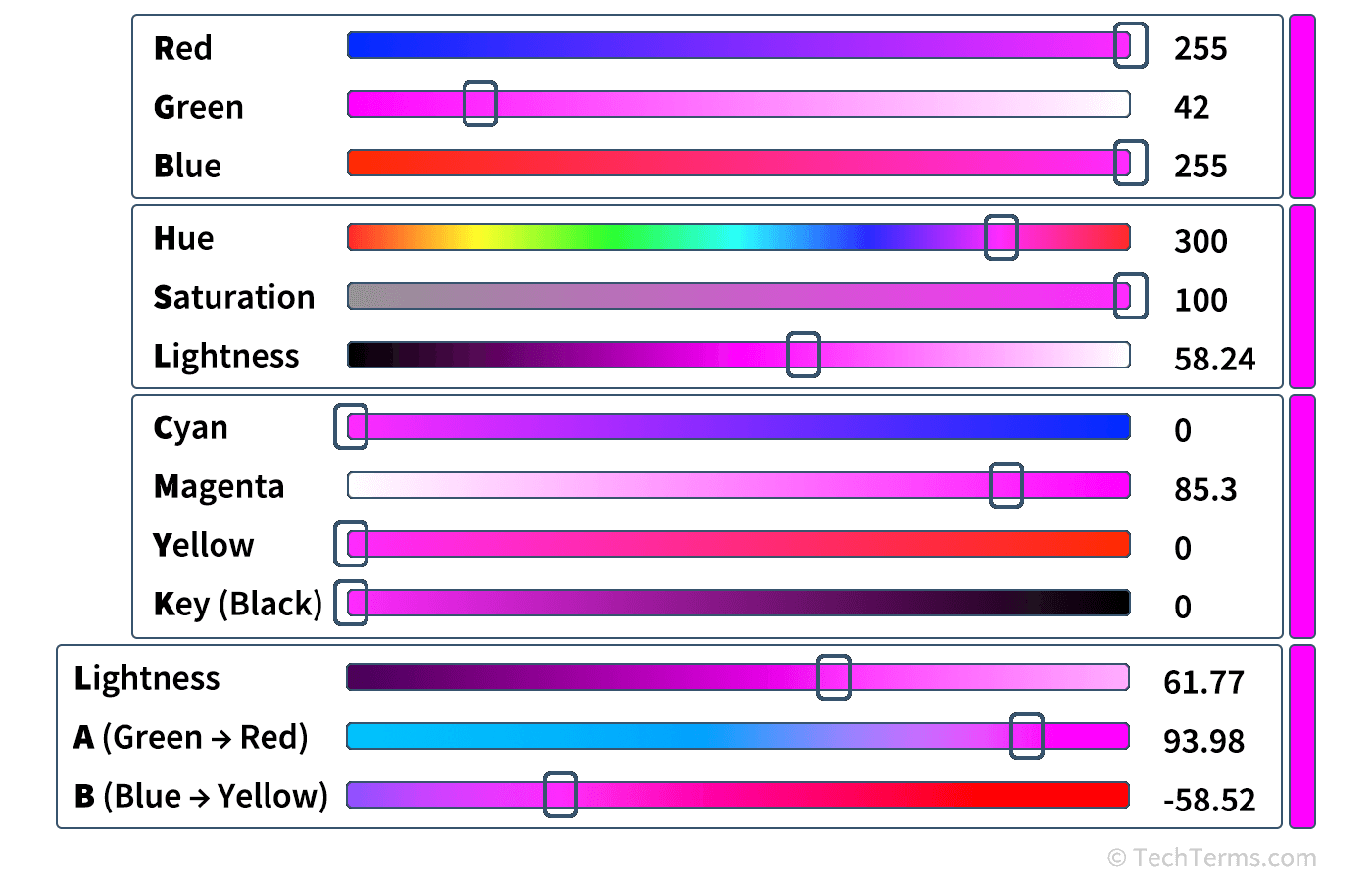Color Model
A color model is a way to represent colors mathematically using sets of numbers. A color model defines several measurable attributes of color (such as hue, saturation, and brightness) and represents each attribute as a number within a range. Most color models use sets of three values to define a color, while some use four.
Each color model measures a different set of attributes and the relationship between those attributes. The most common color model for displaying digital images on a computer is the RGB model, which separates color into red, green, and blue light. The most common model for printing images, CMYK, instead represents colors as a mix of cyan, magenta, yellow, and black inks. Other models measure other properties of color like hue, luminance, saturation, or the deviation from a specified middle color.

Software applications can convert color information from one model to another. For example, an image editing application that supports multiple color models allows a graphic designer to primarily use the HSL color model, which makes subtle color adjustments more intuitive. Meanwhile, the computer automatically converts it to the RGB model when it sends the image to the monitor.
While color models define how colors are measured numerically, they do not necessarily represent the limited range of colors a device can display. In most cases, it isn't useful to specify a color that cannot be shown. Software and hardware makers split many color models, particularly RGB, into smaller color spaces that use a limited subset of colors.
 Test Your Knowledge
Test Your Knowledge